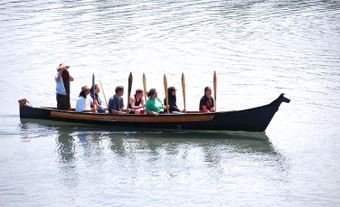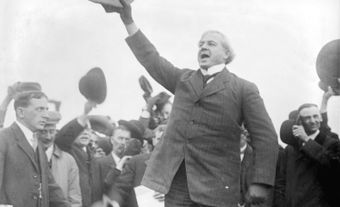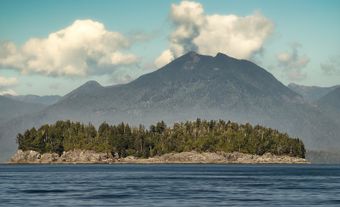New Westminster, British Columbia, incorporated as a city in 1860, population 78,916 (2021 census), 70,996 (2016 census). The city of New Westminster is located on the north bank of the Fraser River, 20 km east of Vancouver. Governor James Douglas established New Westminster in 1859 as the capital of British Columbia. The Royal Engineers surveyed the city and Queen Victoria named it. As a result, New Westminster’s nickname is “The Royal City.” New Westminster is western Canada’s oldest city.
Indigenous Peoples
New Westminster is located on the traditional territory of the Coast Salish peoples, and in particular that of the Qayqayt First Nation. The territory is unceded, meaning First Nations never surrendered their land through treaty or other means.
History
During the Fraser River and Cariboo gold rushes, New Westminster was the mainland’s mercantile centre and transportation hub. However, the city never displaced Victoria’s overall dominance, due to the latter’s easier access to ocean shipping. In 1868, the Legislative Council chose Victoria as the permanent capital of the recently united colonies of British Columbia and Vancouver Island (see also Politics in British Columbia).

Although New Westminster secured a Canadian Pacific Railway line in 1886, the completion of the main line to Vancouver in 1887 further relegated New Westminster to a secondary rank. Nevertheless, the city remained an important freshwater port, major lumber producer, salmon canning centre, commercial centre for the Fraser Valley and administrative and service headquarters. Institutions located in New Westminster included the County Court, BC Penitentiary, Provincial Mental Hospital and Royal Columbian Hospital. In 1904, the city secured rail links to the United States via the Great Northern Railway and Fraser River Railway Bridge. In 1910, a link arrived to the eastern Fraser Valley via the BC Electric Railway. Finally, a link to eastern Canada via the Canadian National Railway was built in 1915.
Population
New Westminster’s population is also ethnically diverse. According to the 2021census, prominent ethnic groups within the city include Chinese(10.9 per cent of the population), South Asian (10.4 per cent), Filipino (8.7 per cent), Black (3.5 per cent) and Korean people (2 per cent). Most immigrants living in New Westminster cite their country of birth as the Philippines, followed by India, China, the United Kingdom and South Korea. Indigenous peoples make up 3.1 per cent of New Westminster’s population.
Economy
The salmon canning industry, penitentiary and a Labatt’s brewery were once major employers in the city. Today, major employers include the Royal Columbian Hospital and professional, scientific and technical services.
The original SkyTrain line, opened in 1986, included a stop in New Westminster. This, combined with the city’s strategic location as the centre of the Lower Mainland and the redevelopment of the waterfront, increased tourism in the area.
Cultural Life

Few of the city’s colonial era buildings remain, the most well known being the Captain William Irving House (1864-65), now the city’s historic centre. A major fire in 1898 wiped out the downtown section and some residential areas. However, many structures built in the following decade survived. Behind the Irving House is the New Westminster Museum and Archives. A retired paddlewheeler on the waterfront of Westminster Quay is the site of another museum, the Samson V Maritime Museum.
Three British Columbia premiers called New Westminster home: John Robson founder of the British Columbian (1861-1983) newspaper, Richard McBride and Byron Johnson. New Westminster is also known for the national success of its lacrosse teams. The city is home to the Canadian Lacrosse Hall of Fame.

 Share on Facebook
Share on Facebook Share on X
Share on X Share by Email
Share by Email Share on Google Classroom
Share on Google Classroom



